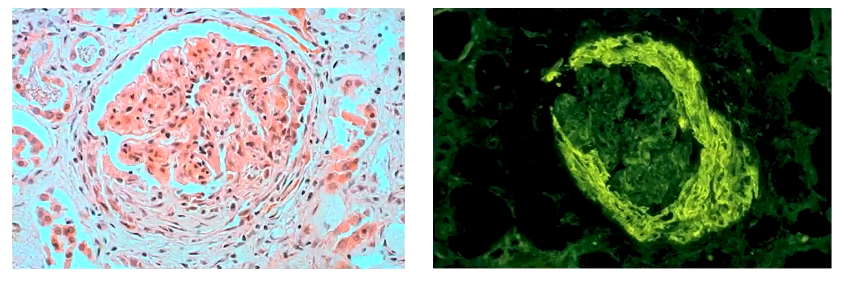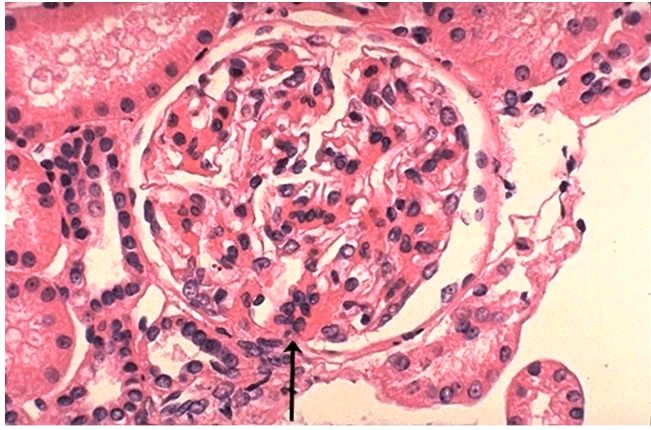3) Pathophysiology of glomerular disease and nephritic syndrome
1/9
There's no tags or description
Looks like no tags are added yet.
Name | Mastery | Learn | Test | Matching | Spaced |
|---|
No study sessions yet.
10 Terms
Why is the glomerular capillary wall especially vulnerable to immune-mediated injury?
It is highly vascular, under high pressure, and has a negatively charged filtration surface that attracts immune complexes
Is goodpasture syndrome endogenous or exogenous
Endogenous
Which of the following is a typical gross finding in chronic glomerulonephritis?
Small, shrunken kidneys with a granular cortical surface
Which of the following best describes the glomerular histology in chronic glomerulonephritis?
Global glomerulosclerosis with obliteration of capillary loops
What tubular or interstitial changes are commonly seen in chronic glomerulonephritis?
Tubular atrophy, interstitial fibrosis, and lymphocytic infiltration
Which of the following best represents the five main pathological effects of glomerular disease?
Proteinuria, hematuria, reduced GFR, hypertension, and edema
Which of the following list correctly identifies the major causes of nephritic syndrome?
IgA nephropathy, post-infectious glomerulonephritis, lupus nephritis, membranoproliferative GN, rapidly progressive GN, Alport syndrome, wegeners syndrome, and Henoch-Schönlein purpura

What is this
Post infective glomerulonephritis

what is this
RPGN

What is this
IgA nephropathy